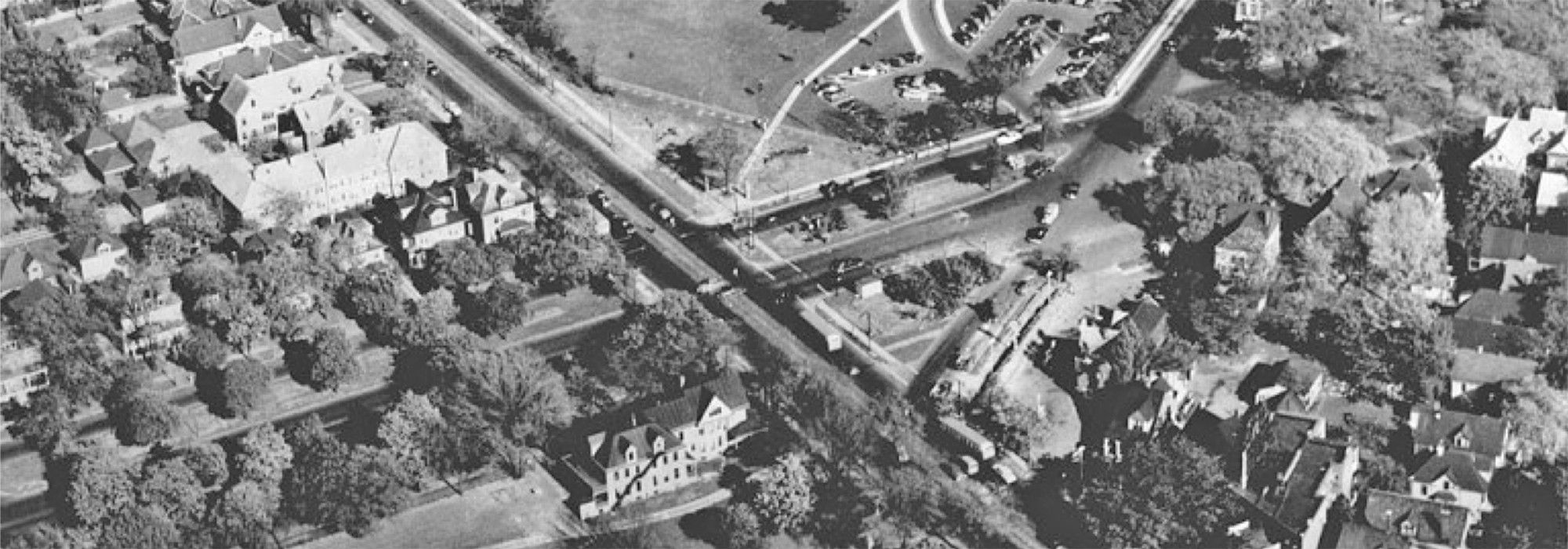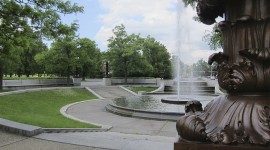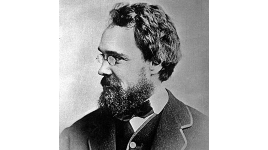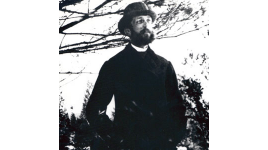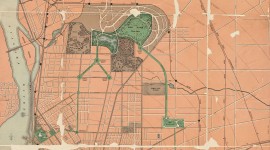Action Needed for Buffalo Olmsted Parkway
Designed between 1868 and 1915, the Buffalo Park and Parkway System, listed in the National Register of Historic Places and a hallmark of the city’s urban landscape, was among the first of its kind in the United States. Its design inspired numerous other park systems nationwide. Frederick Law Olmsted, Sr., collaborating with Calvert Vaux, developed a large, undeveloped parcel outside the city and connected it with other smaller parks by a system of parkways. Overlooking the city, “The Parade” (now Martin Luther King, Jr., Park) initially accommodated military drills and included a public hall that was later redesigned by John Charles Olmsted. The interconnected system of parkways created green ribbons that ran through the city’s residential neighborhoods. Humboldt Parkway, which connected Delaware Park to The Parade, is often considered the grandest of its kind, and was a broad boulevard featuring majestic, tree-lined avenues. This Parkway was destroyed beginning in the early 1950s with the construction of the Kensington and Scajaquada Expressways. For many years advocates have been promoting the rehabilitation of the Humboldt Parkway and the removal of the Kensington Expressway; the Buffalo Olmsted Parks Conservancy has created a comprehensive planning framework that addresses the totality of the park system. However, a Federal Highway Administration (FHWA) and New York State Department of Transportation (NYSDOT) design to cap the highway rather than rehabilitate the nationally significant historic designed landscape would negate the possibility of ever reconnecting Buffalo’s full Park and Parkway System – the most ambitious and fully realized of the three pioneering networks conceived of by Olmsted and Vaux.
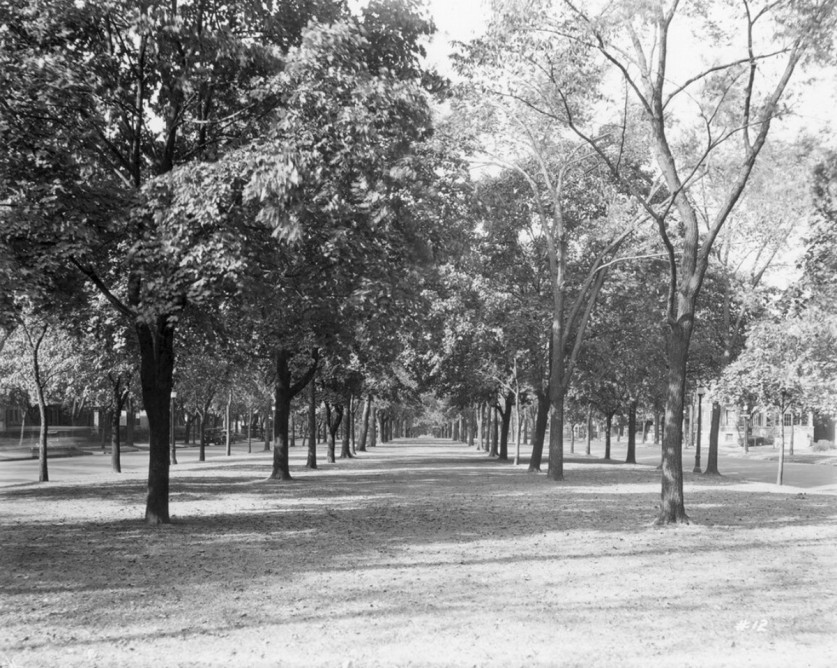
History
Along with Brooklyn (1866) and the Chicago South Park (1870) systems, the Buffalo Park and Parkway system is one of the three collaborations between the two preeminent landscape architects, Frederick Law Olmsted, Sr., and Calvert Vaux, and a progenitor of the park and parkway system. Although initially asked to select one site for a large park in Buffalo, Olmsted proposed instead the acquisition of a large, undeveloped parcel outside the city to be connected to smaller parks by a system of parkways. Working with Vaux to create recreational space to temper Buffalo’s urban conditions, Olmsted developed the 350-acre park from existing agricultural land.
Closer to the urban core, “The Front” was situated on a bluff overlooking Lake Erie and included an amphitheater, a formal terrace, and a network of carriage drives; overlooking the city, “The Parade” initially accommodated military drills and included a public hall later redesigned by John Charles Olmsted with aquatic features. Augmenting the parks was an interconnected system of parkways, boulevards, and avenues, forming a northerly arc around the city. Punctuated by residential squares and circles, the tree-lined streets with generous setbacks, planted medians, and landscaped central areas added 125 acres of parkland to the system and allowed visitors to travel from one park to another without leaving the serenity of these green spaces. Humboldt Parkway was designed in this first phase of work by Olmsted and Vaux.
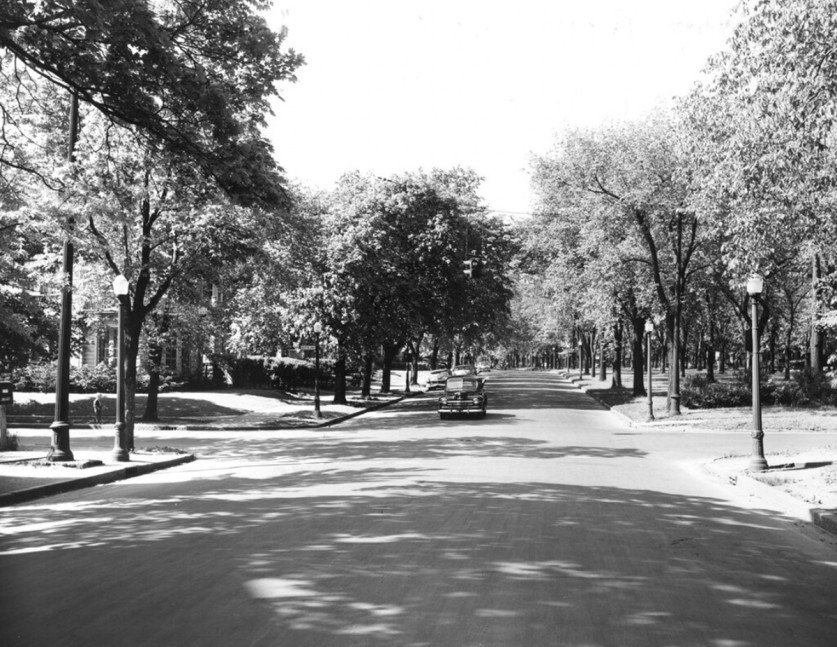
Increased industrialization and population growth strained the capacity of the early parks. The Olmsted firm was again engaged at the end of the 1880s to extend park planning into the problematic southern section of the city where railroads now crisscrossed the low-lying swampy areas. Large neighborhood recreational parks, Cazenovia and South, the latter including an arboretum, were planned by John Charles Olmsted, and added to the system, as well as significant changes to the Parade, renamed Humboldt (now Martin Luther King, Jr., Park). Because these parks were designed as a unified system, not as disparate recreation areas, Olmsted was able to design each for specific uses. For example, The Parade, with its expansive grounds, was perfectly suited for formal ceremonies. Each park offered neighborhood residents opportunities for recreation, and together they defined a complete, integrated, and visually cohesive system whose integrity is further tied to the fabric of the city due to its close relationship to the radial street plan laid out by Joseph Ellicott in 1804.
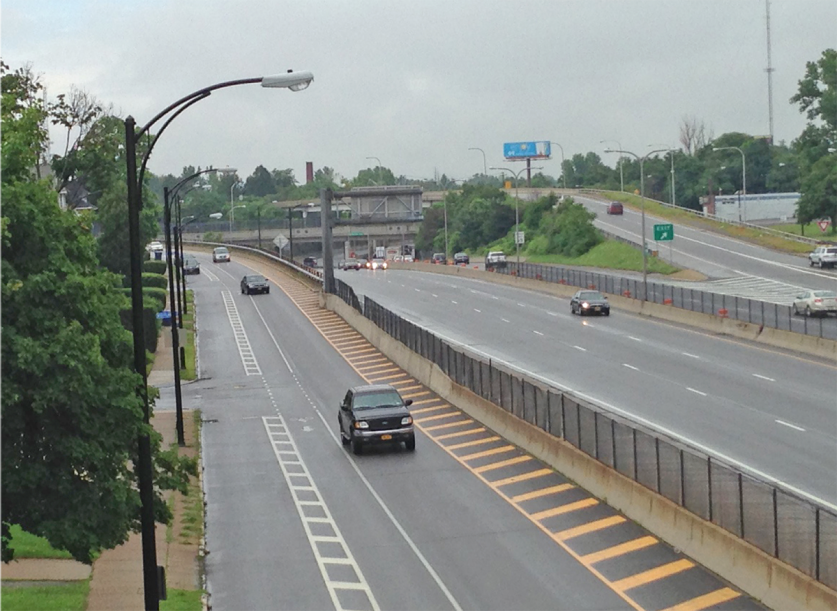
As with other Olmsted public landscapes in the postwar era, a lack of appreciation for this historic built legacy led to neglect and erasure; over the years, Buffalo’s park system deteriorated, with some elements destroyed or modified due to the introduction of new buildings or roadways. What was originally a system of eight parks, eight circles, and nine parkways, is now comprised of six parks, eight circles, and seven parkways. Beginning in the early 1950s Humboldt Parkway, connecting Delaware Park to Martin Luther King Jr., Park, was effectively destroyed by the construction of the Kensington and Scajaquada Expressways, which now divide neighborhoods and limit freedom of movement. The Parade and Humboldt Parkway were located in, and encouraged the development of, a middle-income African American neighborhood that has deteriorated since the installation of the roadways. Once-whole neighborhoods have been carved into segmented pieces and a porous and fluid navigation of the park system has become nearly impossible. However, pioneering research by Patricia M. O’Donnell in 1979 (who in 2023 received the American Society of Landscape Architects Medal), determined that remnants of the Parkway remain, and that much more research is needed. When considering the future of this parkway, O’Donnell’s prescient vision is worth restating: “The parkway system was designed to link parks along pleasurable thoroughfares. The two main portions that are still intact still serve that purpose. These remaining healthy portions of the system need to be bolstered by continued reforestation and protected from any further encroachments.”
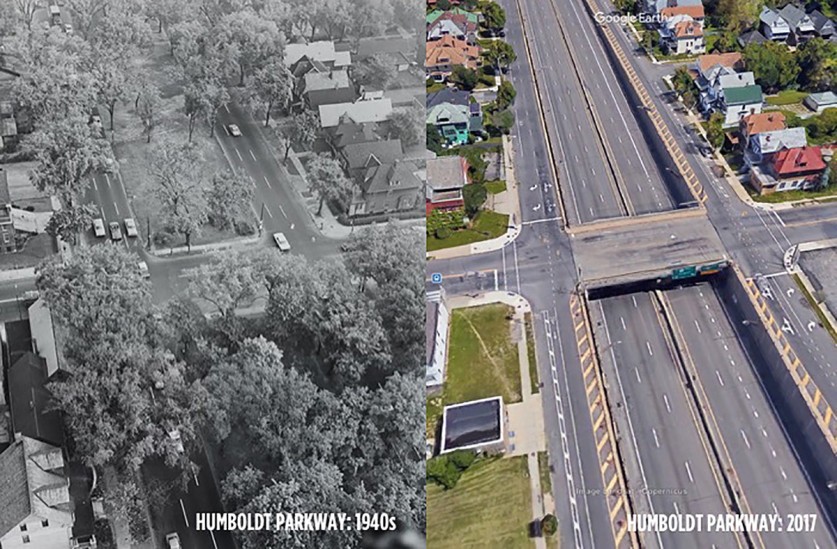
In recognition of this significant integrity, the modified park and parkway system was listed in the National Register of Historic Places in 1986. The Buffalo Olmsted Parks Conservancy (BOPC) was established in 1995 to oversee the management of the more than 850 acres of the park system, taking on the maintenance and operations of the entire park and parkway system in 2004. In 2008 BOPC completed a Master Plan for the system, entitled “Buffalo Olmsted Park System, Plan for the 21st Century,” a “planning framework” for a “comprehensive restoration plan for the Buffalo Olmsted Park System.”
Threat
The FHWA and NYSDOT are proposing the construction of a mile-long “cap” over the Kensington Expressway (NYS Route 33). Their preferred alternative includes covering the depressed section of the Expressway, creating a 4,150-foot-long tunnel between Sidney Street and Dodge Street. The proposed landscaping plan on the tunnel deck purports to be similar to the historic Olmsted-designed Humboldt Parkway, and the design includes “reconstructing” part of the original design. According to the BOPC, this proposed “reconstruction” resembles the historic Olmsted-designed Humboldt Parkway only insofar as it has grass and trees.

Section 106 of the National Historic Preservation Act (NHPA) of 1966 requires that federal agencies (including, as in this case, FHWA), consider the effects on historic properties of any project they carry out, assist, fund, permit, license, or approve throughout the country. The process allows the Advisory Council on Historic Preservation (ACHP), consulting parties, and the public the chance to weigh in on the project before a final decision is made. There were two public information sessions for the Kensington Expressway Project held on September 27, 2023: state officials were present at both, but according to some attendees, they refused to answer or respond to any questions, creating a hostile forum for public engagement. Advocates say there has been inadequate opportunity for public interaction or participation in design review and the preparation of options, giving consulting parties little time to review documents and no time for public discussion.
BOPC, along with Preservation Buffalo Niagara and the Buffalo Museum of Science, are consulting parties in the Kensington Expressway Project, and have voiced their disapproval of the proposed alternative. As part of the National Environmental Protection Act (NEPA) regulatory process, which is intended to work together with Section 106, an Environmental Assessment (EA) of the project alternatives was undertaken and published, with comments originally due by October 27, and now extended to November 10. The EA process will conclude with either a Finding of No Significant Impact (FONSI) or a determination that an Environmental Impact Statement (EIS) – undertaken when significant cultural or environmental impacts are likely – is required. The consulting parties and community members are concerned that a FONSI will be the finding, given discussions that many have had with the NYSDOT officials at recent public hearings.
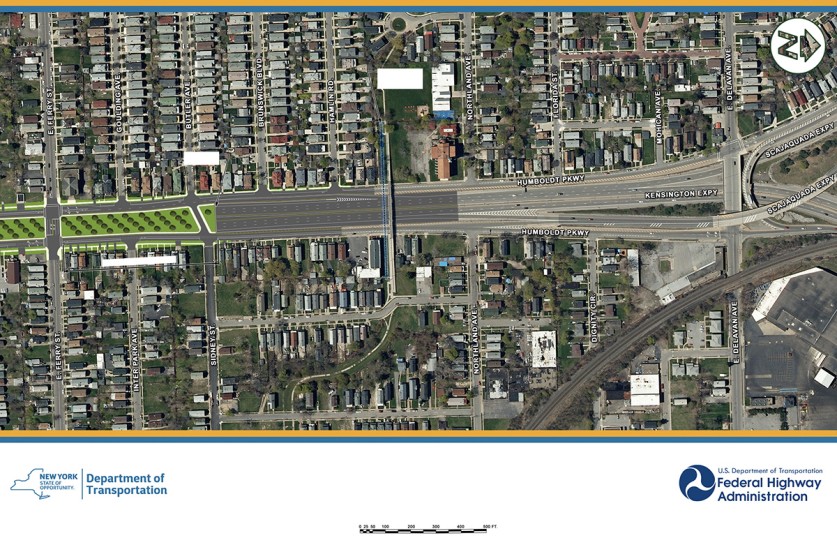
Many of the Section 106 consulting parties, local citizens, and other East Side and cultural organizations have developed an ad hoc group, the East Side Parkways Coalition (ESCP). They support having an EIS undertaken, which would provide traffic and air quality studies; they also recommend that a Cultural Landscape Report (CLR) of the historic Humboldt Parkway be produced. The results of this detailed research and analysis would inform management decisions, appropriate treatment, potential adverse effects, stewardship, and other matters. BOPC and various other organizations and citizens have repeatedly requested a CLR of the project administrators, but this request has not been officially acknowledged.
How You Can Help
The future of this nationally significant park and parkway system by Olmsted and Vaux, which is listed in the National Register of Historic Places (TCLF’s President, Charles A. Birnbaum, has stated that it is a potential National Historic Landmark candidate), is at stake. Without an Environmental Impact Statement and a Cultural Landscape Report, reviewing agencies and decision makers lack sufficient context and understanding for determining the appropriateness of capping the Kensington Expressway.
Buffalo has demonstrated its ability to successfully steward nationally significant properties that have been on the brink of erasure. The Darwin D. Martin House complex, located in the Parkside Historic District laid out by Frederick Law Olmsted, Sr., has been the beneficiary of a $50 million restoration to recapture Frank Lloyd Wright’s design intent. Shouldn’t the nationally significant park system be afforded the same opportunity?
Contact the following elected officials by Friday, November 10, 2023, and ask that [1] an Environmental Impact Statement for NYS Route 33, Kensington Expressway Project (PIN: 5512.52) be conducted, including traffic studies of Buffalo and all the radial streets, air quality studies for the East Side of Buffalo, and an evaluation of whether commuting into and out of Buffalo has decreased post-pandemic; [2] a Cultural Landscape Report (CLR) be undertaken; and [3] full design options be prepared with community participation, including the rehabilitation of Humboldt Parkway.
Mr. Sanjyot Vaidya
Project Manager
New York State Department of Transportation, Region 5
100 Seneca Street
Buffalo, N.Y. 14203
AND
Matthew Seymour
Senior Area Engineer
Federal Highway Administration Leo W. O’Brien Federal Building
11A Clinton Avenue, Suite 719 Albany, N.Y. 12207
Both can be reached at: Kensingtonexpressway@dot.ny.gov
Honorable Pete Buttigieg, U.S. Secretary of Transportation, E: DOTExecSec@dot.gov
State Senator Tim Kennedy, E: kennedy@nysenate.gov
Assembly member Crystal Peoples-Stokes, E: peopleC@nyassembly.gov
U.S. Senator Schumer: https://www.schumer.senate.gov/contact/message-chuck
U.S. Senator Gillibrand: https://www.gillibrand.senate.gov/contact/email-me /
N.Y. Governor Kathy Hochul: https://www.governor.ny.gov/content/governor-contact-form
Get a seat at the table and become part of the Section 106 process. Submit a request to be an official consulting party if you can indicate that you have “standing” – such as being involved in a non-profit organization that deals with landscapes, preservation, or Olmsted parks and sites. While the deadline was last year, we encourage those interested to request participation in order to demonstrate the importance of Buffalo’s Olmsted Park and Parkway System and the urgency of the concern about its future:
Jessica Prockup
Environmental Specialist 3
New York State Department of Transportation
50 Wolf Road, POD 4-1
Albany, NY 12232
E: Jessica.prockup@dot.ny.gov



